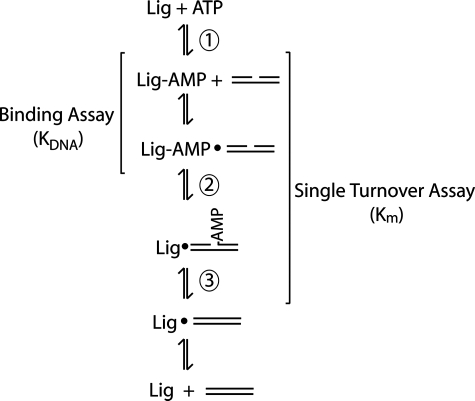FIGURE 1.
DNA ligation reaction. The reaction mechanism shared by ATP-dependent ligases has three catalytic steps. First, the ligase adenylates itself on an active site lysine to form an enzyme-AMP intermediate. The AMP group is then transferred to the 5′-phosphate of the nicked DNA (step 2) before a phosphodiester bond is formed during step 3 to yield the ligated product. All three catalytic steps require magnesium or another divalent metal. The binding assay, performed in the absence of magnesium, measures the dissociation constant of adenylated ligase binding to DNA. DNA end joining activity measured under single turnover conditions with adenylated DNA ligase III reflects the rate of steps 2 and 3, without the contribution of step 1 or dissociation of the ligated DNA product.

